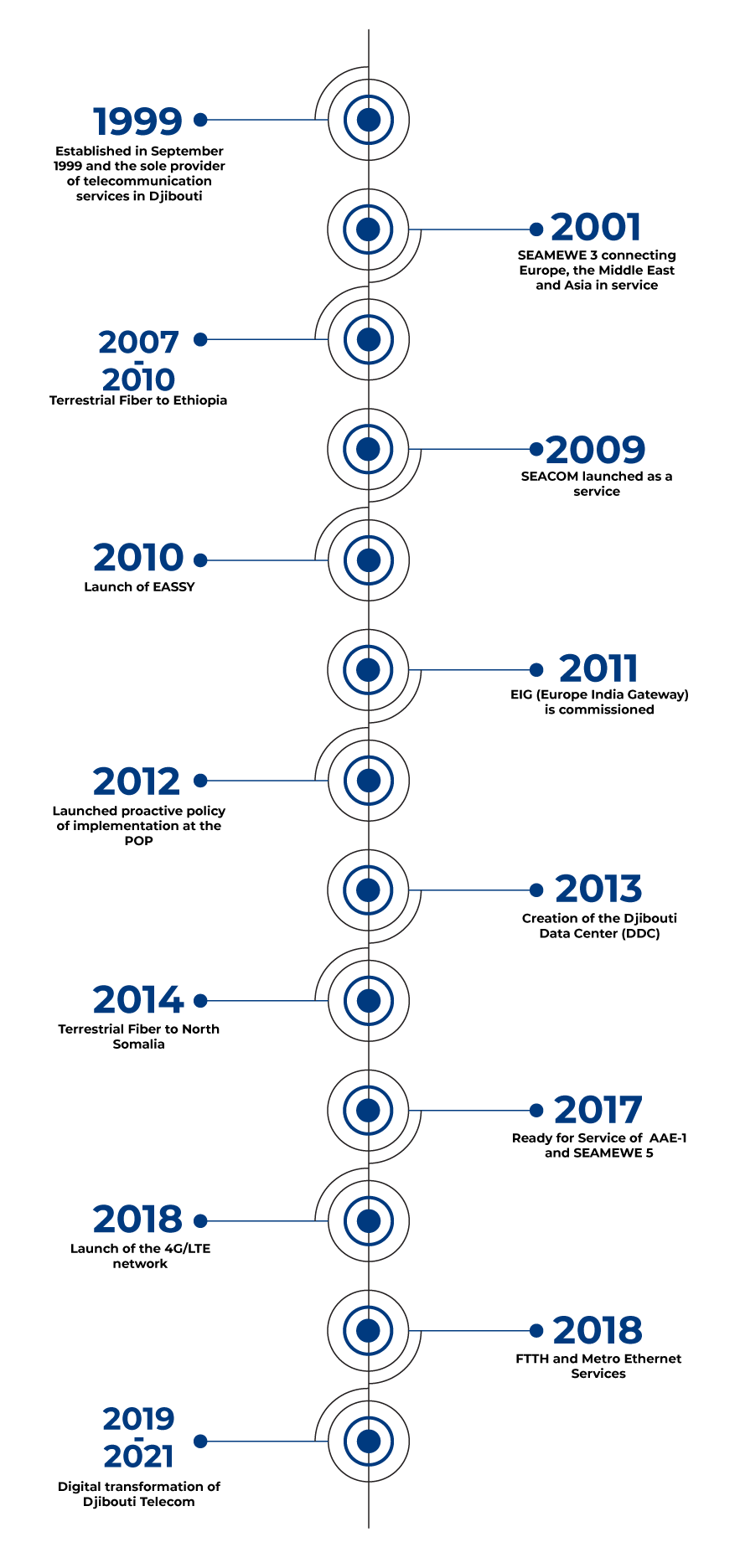Company History & Milestones
Djibouti Telecom is the national telecommunications operator of the Republic of Djibouti. The company was born on September 20, 1999 from the merger of the Telecommunications Department of the Office of Posts and Telecommunications (OPT) and the International Telecommunication Company of Djibouti (STID). It is an autonomous operator of private law, holding the monopoly of national and international telecommunications throughout Djibouti.
Djibouti Telecom is governed by the law on commercial companies. Its regulatory framework is set by Law No. 13 of 1998 on the reorganization of the postal and telecommunications sector and Law No. 80 of 2004 on the reform of the ICT sector (Information and Communication Technologies).
The Company is created to make the territory of the Republic of Djibouti an advanced telecommunication platform on the eastern side of Africa for a development of telecommunications traffic to and from the African, Asian and European continents. Djibouti Telecom provides fixed, mobile and Internet services.
The company has established itself as a regional hub offering a broad portfolio of voice and data / IP services, capacity and interconnections on its network, extending to Eastern and Southern Africa, the Middle East and the Middle East. East and Europe, as well as excellent bandwidth and network availability. Djibouti Telecom also offers a wide range of communications infrastructure services ranging from network connectivity to colocation services with data center and teleport facilities, through peering agreements with major Internet players and remote control point’s presence in Marseille, Palermo, Dubai and Singapore.
Djibouti Telecom is today a leading strategic center for international telecommunication services in East Africa with its underlying network infrastructure including seven international submarine cables, with direct connection in more than 90 countries, and two terrestrial cables (between Djibouti-Somali, and Djibouti-Ethiopia) and two new cables for 2021. In order to improve the resilience of the network, the company has built two cable landing stations.

